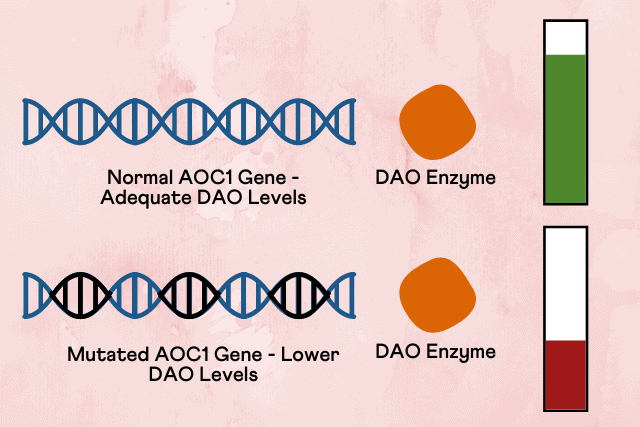What are histamines?
Does a tasty plate of Eggs Benedict send you into a sneeze spiral? Do you often find yourself with red and itchy skin? Well, it looks like you are not alone! According to the Asthma and Allergy Foundation of America, more than 50 million Americans experience some type of allergy every year. Hay fever, food allergy, skin allergy are very common in the United States.
People living with allergies are no strangers to 'antihistamines.' What are antihistamines, and how do they help manage your allergies? To understand that, let's first look at histamine. Histamine is generally our body's ally.
A few of the many functions it performs are contraction of smooth muscles, acid secretion in the stomach, stimulation of the brain to keep it active, and lowering our blood pressure.
Histamines and allergies
Histamine is released by the immune cells when you come in contact with possible allergens. This generally protects your body from allergic reactions.
Sometimes, the immune cells release histamine in response to components in the environment or food that are harmless. In other words, the immune system mistakes a non-allergen for an allergen and mounts an allergic reaction.
This overreaction leads to watery eyes, nasal congestion, swelling, itching, vomiting, or diarrhea. In severe cases, your airways may swell, and enough oxygen cannot be supplied to your organs. It can at times even be fatal when it leads to an anaphylactic shock. This needs to be treated with an 'EpiPen' immediately. EpiPen is basically an injection of epinephrine to treat your severe allergic reaction instantly.
What is histamine intolerance?
Antihistamines are used to treat mild to severe allergy symptoms. They act by blocking the effect of histamine, hence the name ANTIhistamines.
So, why do some people react so badly to the build-up of histamine?
This is all thanks to a condition called HISTAMINE INTOLERANCE. This condition either causes a rapid build-up of histamine in the body and/or results in an inability to break down histamine effectively.
An enzyme called diamine oxidase, DAO for short, is responsible for breaking down histamine. Lower levels of this enzyme result in histamine intolerance. A few factors that influence the DAO enzyme levels include conditions like inflammatory bowel disease, medications that block DAO action, and certain histamine-rich foods that cause DAO dysfunction.
AOC1, or Amine Oxidase Copper Containing 1, is a major genetic contributor to histamine intolerance. This gene is responsible for the production of the DAO enzyme. If you carry a ‘faulty’ version of the AOC1 gene, then less DAO is produced, leaving you highly prone to allergic reactions.
Histamine intolerance can be treated by following a low histamine diet and taking DAO supplements.
Histamine intolerance genetic test
A simple genetic test can help identify your risk for histamine intolerance.
It involves analyzing what version or variant of the AOC1 gene you carry.
Most genetic ancestry tests provide your DNA information in the form of a text file called the raw data. This typically looks like a bunch of numbers and letters that can be decoded to obtain useful health information. This is where Xcode Life comes into play.
All you have to do is upload this file and order any of the 13 in-depth health reports. The AOC1 gene for histamine intolerance is analyzed as a part of the Gene Allergy report. It also includes various seasonal and environmental allergies.





